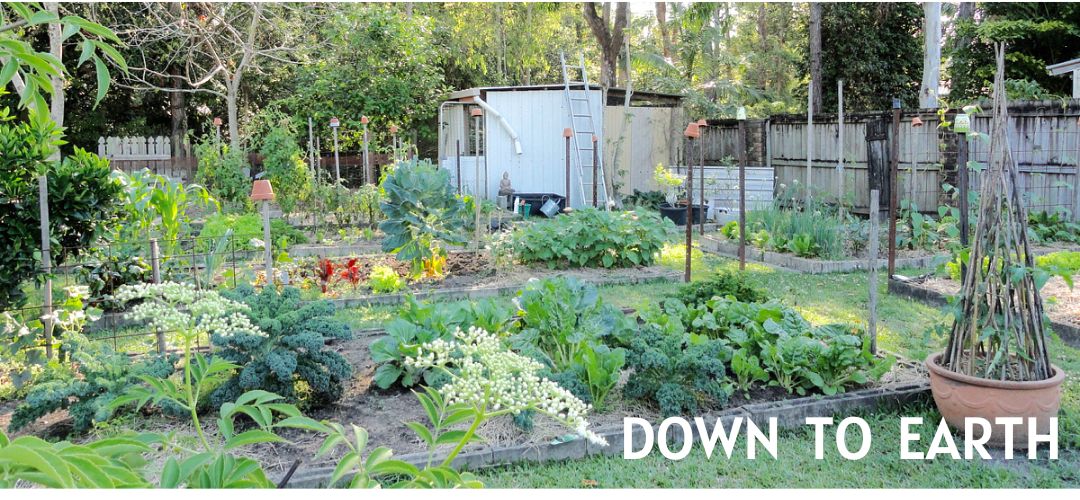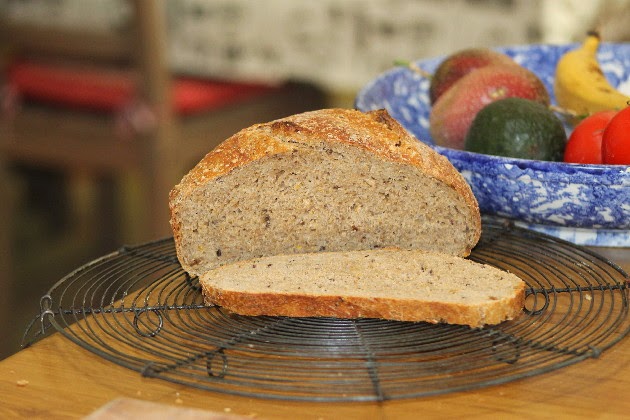What's not to love about bread? Well, maybe I should clarify that statement somewhat - what's not to love about good wholesome bread. The common, plastic-wrapped, supermarket loaf does not have any part in this post. I'm talking about homemade rye bread today and the common supermarket loaf is about as far away from homemade rye as it could be. This rye loaf will give you good nutrition, complex carbohydrates, high fibre with a low glycemic index, as well as many vitamins and protein. There are a few types of rye bread. My favourites are pumpernickel, which is 100% rye, and this loaf which is 75 percent rye flour and 25 percent unbleached white flour/wholemeal wheat flour. If you're buying bread flour for the first time, buy it in small quantities until you find type of bread you like, then buy flour for that type of bread. If you're buying rye flour, look in the shop for caraway seeds too and get 15 - 30 grams if they're there. Caraway is the traditional seed used with rye and it's a marriage made in heaven.
Many people are put off making bread because they believe it is difficult and time consuming. This bread is called five minute bread because you'll only be working on the dough for five minutes. Making good bread is certainly a skill, but it's just a matter of learning how and then practising enough to perfect it. This bread is a very good loaf to start off any new baker because there is almost no kneading and there are few ingredients. Here they are:
Ingredients:
- 2 cups rye flour
- 1 cup white or wholemeal wheat flour
- ¼ teaspoon dry yeast
- 1 teaspoon salt
- 1½ cups warm water If you have to add slightly more water to get a moist dough, do so. The amount water you use will depend on the type of flour you use, and your climate. Flour is affected by humidity so you'll use less water in humid weather.
You can make this bread using all white bread flour or any mix of bread flours, just make sure it's three cups in total.
Equipment:
- large mixing bowl
- measuring cups and spoons
- Dutch oven or covered cast iron casserole pot. This provides the ideal conditions for cooking the loaf.
Time frame:
You'll need to make the dough about 12 hours before you want to bake the loaf. I usually make my dough late in the afternoon on the day before I want to bake it.
Your time periods will be:
Making the dough - about three minutes, at least 12 hours before you intend to bake the loaf.
Shape the dough - one minute, one hour before you intend to bake.
Place the dough in the pan to bake - less than a minute.
Baking will take about 30 - 35 minutes.

- Late in the afternoon on the day before you want the bread, take a large bowl and measure in three cups of flour, ¼ teaspoon of dry yeast and a teaspoon of salt. Mix the dry ingredients together. Add 1½ cups water and mix the ingredients together with your hands until all the flour and water have mixed together completely. This mixing (not kneading) will take less than a minute. Just continue mixing the dough with your hands until all signs of dry flour have gone.
- Cover the top of the bowl with plastic wrap and leave the bowl on the kitchen bench overnight.
- The next day, about an hour before you want to bake the bread, sprinkle a small amount of flour onto your clean kitchen bench. Tip the dough out onto the floured surface. At this stage it will look like a sloppy mess.
- Take the top portion of the dough (at 12 o'clock) and fold it down onto the bottom portion (6 o'clock) and push in with the base of your hand. Turn the dough slightly and repeat the folding from top to bottom for about a minute or until the dough is smooth and you can shape the dough into a smooth round ball - see below.
- Move the dough ball to a clean tea towel sitting inside the mixing bowl, cover the dough with the tea towel and let it sit there to rise for about an hour - see below. If you have caraway seeds, or want to add seeds, oats or polenta to the top of the loaf, wet the top of the dough and sprinkle it on.

- Fifteen minutes before baking, place the cast iron pot and lid in the oven and turn the oven on to the top temperature - I use 230C/445F.
- Just before you place the dough into the baking pot, clip the top of the dough with scissors or slash the dough with a very sharp knife.
- When the pot is extremely hot, carefully place the dough in the pot, put the lid on and close the oven door. Leave the temperature on high.
- Twenty minutes later, take the lid off the pot and turn down the temperature to about 200C/395F.
- After another 10 - 15 minutes, when the loaf is golden brown, remove the loaf from the oven onto a wire rack.
All our ovens are different, if you think the bread needs more time in the oven, leave it in. Check the loaf when you cut it and if it's slightly doughy in the centre, it will need an extra five minutes next time you bake it.
This bread is not sour dough but it's similar to sour dough. When the loaf is hot, the crust will be crusty and chewy like sour dough. The inside of the bread has a slightly chewy texture, also like sourdough. The bread can be eaten fresh or toasted.
This is one of the easiest loaves of bread you ever bake so even if you've never baked before, try this and see how you go. You never know, you may love baking and this might be the beginning of that. If you do bake the loaf, please take a photo and put it on your blog, then leave the link to the photo here so we can all visit and see your bread. If you don't have a blog, post the photo on the forum.
Good luck, bakers!



